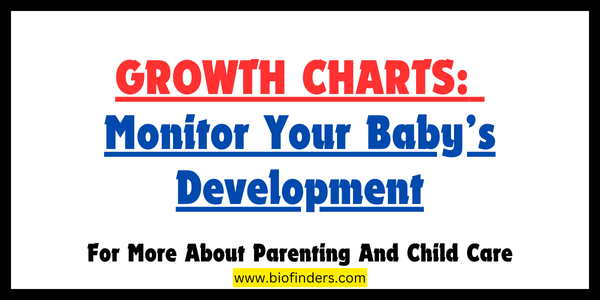Newborn babies are a whirlwind of emotions and endless questions for parents. One of the biggest concerns? Their growth and development. Enter growth charts: a fantastic tool that can help you track your baby’s progress and ensure they’re thriving. But what exactly are growth charts, and how do you use them effectively? Don’t worry, this comprehensive guide will equip you with all the knowledge you need to become a growth chart pro!
What are Growth Charts?
Growth charts are essentially roadmaps for healthy child development. These charts depict weight, height, and head circumference for children of different ages and genders. They utilize percentiles, which represent the percentage of children who fall within a specific range for a particular measurement.
For example, a baby on the 50th percentile for weight is right in the middle of the healthy weight range for their age and sex. On the other hand, a baby charting at the 90th percentile for height might be taller than 90% of other babies their age.
Here’s a breakdown of the key components of a growth chart:
- Age: This is displayed horizontally on the chart’s x-axis.
- Measurement: This could be weight, height, or head circumference, typically displayed on the y-axis.
- Percentile Lines: These are curved lines on the chart representing different percentiles (e.g., 10th, 50th, 90th).
- Shaded Areas: Some charts depict shaded areas to represent the normal growth range (often between the 5th and 95th percentiles).
Types of Growth Charts
The two most commonly used growth charts are:
- World Health Organization (WHO) Child Growth Standards: This chart is ideal for babies aged 0-2 years and is based on healthy, breastfed children.
- Centers for Disease Control and Prevention (CDC) Growth Charts: Used for children aged 2 years and above, these charts are based on a representative sample of the US population.
Where to Find Growth Charts:
- Pediatrician’s Office: Your pediatrician will likely have growth charts readily available during well-child visits.
- Online Resources: Several reputable websites offer downloadable growth charts from trusted organizations like the WHO and CDC.
How to Use Growth Charts Effectively
Now that you understand the basics of growth charts, let’s delve into how to use them to monitor your baby’s development:
1. Gather Your Information:
Before plotting points on the chart, you’ll need your baby’s:
- Age: This is usually calculated in weeks or months, depending on your baby’s age.
- Weight: Measured in pounds or kilograms.
- Length or Height: Measured in inches or centimeters.
- Head Circumference: Measured in inches or centimeters (usually only for babies under 2 years old).
2. Locate the Correct Chart:
Ensure you’re using the appropriate growth chart for your baby’s age and sex. Most charts are gender-specific, so using the correct one is crucial for accurate interpretation.
3. Plot Your Baby’s Measurements:
Find your baby’s age on the x-axis and locate the corresponding lines for weight, height, and head circumference (if applicable) on the y-axis. Mark a dot where these lines intersect.
4. Analyze the Percentiles:
See where your baby’s dot falls in relation to the percentile lines. Remember, there’s a wide range of healthy growth patterns. Generally, as long as your baby’s growth continues along a relatively smooth curve, there’s no need for immediate concern.
5. Track Your Baby’s Progress over Time:
Plot your baby’s measurements at each well-child visit to monitor their growth trajectory. This allows you to see if their growth is consistent and follows a similar pattern.
Important Considerations:
- Growth charts are a tool, not a definitive diagnosis. Don’t solely rely on percentiles to determine your baby’s health.
- Focus on the overall trend. Occasional dips or spikes in growth are normal. What matters most is a consistent upward trajectory.
- Consult your pediatrician. If you have any concerns about your baby’s growth pattern, weight gain, or overall development, always discuss them with your pediatrician. They can interpret the growth chart in conjunction with other factors and advise you accordingly.
Beyond the Numbers: A Holistic Approach to Development
While growth charts offer valuable insights, remember that healthy development encompasses more than just weight, height, and head circumference. Here are some additional aspects to consider when monitoring your baby’s progress
Beyond the Numbers: A Holistic Approach to Development (continued)
- Motor Skills: This refers to your baby’s ability to control their movements. Milestones to look for include rolling over, reaching for objects, sitting up, crawling, and eventually walking.
- Social and Emotional Development: Observe your baby’s interactions with you and others. Are they making eye contact, smiling, responding to their name, and showing signs of attachment?
- Language Development: This encompasses your baby’s babbling, cooing, understanding of simple words and phrases, and eventually, their own communication attempts.
- Cognitive Development: This refers to your baby’s problem-solving abilities, curiosity, and learning capacity. Observe their interest in exploring their surroundings, manipulating objects, and responding to different stimuli.
Remember: Every baby develops at their own pace. These milestones serve as a general guideline, and some variations are perfectly normal. However, if you notice any significant delays or have concerns about your baby’s development, discuss them with your pediatrician.
Additional Tips for Using Growth Charts
- Ask Questions! Don’t hesitate to ask your pediatrician for clarification on anything you don’t understand about the growth chart or your baby’s development.
- Plot Both Weight and Height: Monitoring both weight and height provides a more comprehensive picture of your baby’s growth.
- Consider Genetics: Family history can influence growth patterns. If you or your partner were particularly tall or short, your baby might follow a similar trend.
- Adjust for Premature Birth: If your baby was born prematurely, their pediatrician might use a specialized growth chart that accounts for gestational age.
Conclusion
Growth charts are a valuable tool for monitoring your baby’s development. By understanding how to use them effectively and keeping a holistic perspective on your baby’s overall progress, you can ensure they’re thriving and growing healthily. Remember, consistent communication with your pediatrician is key in addressing any concerns and ensuring your little one receives the best possible care.
So there you have it! With this knowledge, you’re well on your way to becoming a growth chart pro and confidently monitoring your baby’s development. Now go forth and enjoy this incredible journey of parenthood!




Leave a Reply